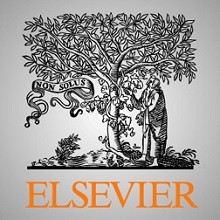
دانلود مقاله چرخه عمر شرکت و مقایسه صورت های مالی
خلاصه
1. مقدمه
2. ادبیات و توسعه فرضیه
3. روش شناسی
4. نتایج تجربی
5. نتیجه گیری
ضمیمه A. تعریف متغیر
منابع
Abstract
1. Introduction
2. Literature and hypothesis development
3. Methodology
4. Empirical results
5. Conclusion
Appendix A. Variable definition
References
چکیده
این مقاله بررسی میکند که چگونه قابلیت مقایسه صورتهای مالی بین شرکتها در مرحله بلوغ چرخه عمرشان و شرکتها در سایر مراحل چرخه عمر متفاوت است. ما فرض میکنیم که شرکتهای بالغ تمایل به تهیه صورتهای مالی دارند که در بین همتایان خود در صنعت قابل مقایسه باشد. با استفاده از نمونه ای از شرکت های فهرست شده در ایالات متحده از سال 1987 تا 2019، شواهدی برای حمایت از فرضیه خود پیدا می کنیم. ما همچنین دریافتیم که این ارتباط بین چرخه زندگی و قابلیت مقایسه با عدم تقارن اطلاعات تعدیل می شود. مجموعه ای از تست های استحکام یافته های اولیه ما را تایید می کند. ما ادبیات مقایسهپذیری صورتهای مالی را با ارائه شواهدی درباره یک عامل تعیینکننده قابل مقایسه گسترش میدهیم. مطالعه ما بینش هایی را در مورد لزوم در نظر گرفتن چرخه عمر شرکت هنگام طراحی استانداردهای حسابداری مالی به سیاست گذاران ارائه می دهد.
توجه! این متن ترجمه ماشینی بوده و توسط مترجمین ای ترجمه، ترجمه نشده است.
Abstract
This paper examines how financial statement comparability varies between firms in the mature stage of their life cycle and firms in other life cycle stages. We hypothesize that mature firms are inclined to produce financial statements that are comparable among their industry peers. Using a sample of U.S. listed companies from 1987 to 2019, we find evidence to support our hypothesis. We also find that this association between life cycle and comparability is moderated by information asymmetry. A battery of robustness tests validates our initial findings. We extend the financial statement comparability literature by providing evidence on a determinant of comparability. Our study provides insights to policymakers regarding the necessity to consider firm life cycle when designing financial accounting standards.
Introduction
This paper examines whether financial statement comparability (hereafter comparability) differs between firms in the mature stage of their life cycle and firms in other stages of their life cycle (hereafter FLC). We also examine whether information asymmetry and agency problems moderate the relationship between comparability and the FLC stages. Comparability is one of the key qualitative characteristics in the financial reporting framework (Financial Accounting Standards Board (FASB), 2018). Comparability increases financial statement users' ability to evaluate a focal firm's performance against its peers by highlighting the similarities and differences between entities that arise due to, or despite of, similar economic circumstances (FASB, 2010). Comparability increases the quality and transparency of the information environment, and thereby enables investors, analysts, auditors and institutional investors to more closely monitor managerial behavior (De Franco, Kothari, & Verdi, 2011). However, focusing on comparability without assessing whether comparability changes across the FLC provides a static perspective. This motivates us to examine the relation between FLC and comparability.
Studies on the determinants of comparability suggest that accounting standards and regulations (Barth, Landsman, Lang, & Williams, 2012; Brochet, Jagolinzer, & Riedl, 2013; Dhole, Lobo, Mishra, & Pal, 2015; Edmonds, Smith, & Stallings, 2018), internal governance mechanisms (Endrawes, Feng, Lu, & Shan, 2018; Francis, Pinnuk, & Watanabe, 2014), the mimicking of strategic imperatives (Francis et al., 2014) and geographical proximity (De Franco, Hou, & Mark, 2021) affect comparability. Imhof, Seavey, and Watanabe (2022) suggests that firms that face higher competition are less likely to produce comparable financial statements owing to concerns about the disclosure of proprietary information. We extend the literature on the determinants of comparability and examine whether FLC affects the degree of comparability.
Conclusion
Firm life cycle theory suggests that firms evolve through distinct life cycle stages. Revenue generation, profitability and cash flows are uncertain during the introduction and growth stages. Introduction, growth, maturity, shakeout and decline phases of FLC reflect the evolution in organization, financing, investment, and structure that firms experience (Miller & Friesen, 1984). Although not all firms go through each phase for the same duration, each stage of the FLC has its own unique characteristics. The changing internal and external operating environments at each stage affect fundamental business models. As a result, motivation to disclose comprehensive high quality information differs, depending on the requirements and characteristics of each life cycle stage.
Financial statement comparability is the degree of similarity between the financial statements of two firms that have faced similar economic transactions, as these economic transactions map into their financial accounting systems. Comparability reduces information acquisition costs and increases the quality of financial information presented in financial statements (De Franco et al., 2011). We hypothesize that firms in the mature FLC phase tend to produce comparable financial statements by comparison with firms in other FLC phases, because mature firms have established internal controls, organization structures and skilled employees. We find evidence supporting this hypothesis. We also find that marked information asymmetry positively moderates the association between FLC and comparability, indicating that such information asymmetry provides incentives for managers to produce comparable financial statements in order to enhance the quality of the information environment. However, alternative interpretations could also exist. For instance, it could also be argued that managers might be less inclined to produce more comparable financial statements if they operate in highly competitive industries (Imhof et al., 2022), in order to reduce the proprietary costs of disclosures.
